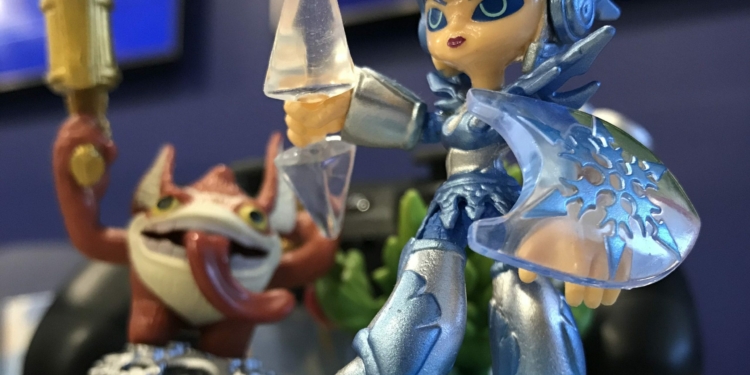Within the lifespan of Generation X, video games development evolved from the romantic image of one man programming from his garage to teams with budgets in the scope of block-buster movies
“As for the mass-market “triple A” games that we at Activision make, these are big budget properties.” said Jen Oneal, studio head for Vicarious Visions, a Capital District-based videogame developing studio under parent company Activision.
“Call of Duty” is one of the parent company’s franchises. According to SuperData, “Call of Duty” titles generated over $1.1 billion in revenue last year. The budgets and profits that sometimes follow, can surpass blockbuster movies from Hollywood.

“It’s significant,” said Oneal. “It’s sizable in terms of budget, effort, time. A lot goes into making a video game. … In order to make a typical mass market game like ‘Call of Duty’ or ‘Crash Bandicoot,’ it is going to be a significant effort.”
What’s often overlooked is that part of that multi-billion dollar industry resides here in the Capital District, with roots established in Menands where Vicarious Visions first developed games involving Crash Bandicoot, Spider Man and later Skylanders. Nonetheless, the bulk of developers established themselves in and around Silicon Valley, where most of the young talent walks out of West Coast colleges with computer science degrees in hand.
The Capital District wasn’t always a novice to the gaming world. Coleco Industries, Inc. created its Telstar system in 1976 and later released ColecoVision at the height of the video game boom of the early 1980s. The latter system, boasting graphics similar to popular cabinet games at local arcades, was produced out of the company’s Amsterdam plant starting in 1982. The market for home videogames crashed only a year later. Coleco filed for bankruptcy in 1988.
Since opening its doors in 1990, Vicarious Visions has gained critical acclaim with hit titles for top brands such as “Guitar Hero On Tour,” “Guitar Hero Aerosmith,” “Kung Fu Panda” and “Spiderman.” VV games are known for pushing technical boundaries to deliver addictive gameplay and immersive art that bring favorite characters and worlds to life for portable, console and PC gamers.
“It certainly is difficult to get talent from the West Coast, but it’s not impossible, though,” said Oneal. “I think what we tend to find is that there is a certain profile of the recruits that we get from the West Coast.”
The developer’s website takes a unique approach from what one would expect. Moreso than advertising the games in which they’ve created, the site sells the amenities found here in the Capital District. Like a local chamber of commerce, it boasts of the quality local school districts, lively music scene, and provides links to real estate agencies.
“These are things that weigh on peoples’ minds. Then, if they have to draw a family here, it definitely helps in that recruiting process,” said Oneal, who moved to the Capital District from California.
The inside of Vicarious Visions studios, which moved from Menands to an inconspicuous building space within Albany County less than a year ago, has the feel of a Division I collegiate athletic program. Whereas a university spends millions of dollars to establish a state-of-the-art training facility to lure blue chip athletes to enroll, the studio possesses an environment geared to attract the best of creative minds.
Oneal had her first taste of the industry after answering an Activision advertisement for a game tester. She grew up playing video games, like most kids, but did not think about it as a possible career while attending school.
“It wasn’t because there wasn’t any female protagonists,” she said. “For me, I thought videogames was for someone who fit a certain description. You had to be a programmer. You had to go to school for computer science. I just didn’t fit that mold. I was a ballet dancer.”
Nonetheless, she recalled playing “Pac Man” with her brother and sister on the Atari 2600 as a moment she should have recognized, “that I was to be in videogames.
Me, my sister and brother — we’d compete playing ‘Pac Man.’ And, I had found a bug in the game. If you followed a certain pattern, you’d get all the ghosts stuck in the door.”
Like a good sibling, Oneal withheld this knowledge from her brother and sister.
“So, they had their turns, and then I had mine,” she said. “I just kept running the ghosts into the door and finished the mazes over and over again.”
After her stint as a game tester, she went back to school for programming and digital arts. From there, she developed a niche for project management. Her office is full of knickknacks and pictures from iconic video games. Just to prove her office is better than yours, she has a television with a Playstation 4 and Xbox One. It’s to test game features and scout features, she said. But, that also means, she still loves to play games.
Oneal said the old romantic side of game developing still exists in the mobile market. According to Newzoo, the mobile gaming market is worth more than $63 billion, representing 47 percent of the global gaming market in 2018. With the average gamer well into his or her 30s, the market is supported by disposable income from all demographics, and it caters skill levels ranging from the button mashers to the story seekers.
“‘Legend of Zelda’ is the game that comes to mind, immediately, when I share what is my favorite game,” said Oneal. “But, it wasn’t until I played Zelda the first time. This was a different type of game. It’s not just about mashing buttons and skill. There’s a little bit of strategy here. There’s story. For me, the ability to tell stories through games, it really opened up my mind as to what the possibilities could be for this kind of entertainment.”



